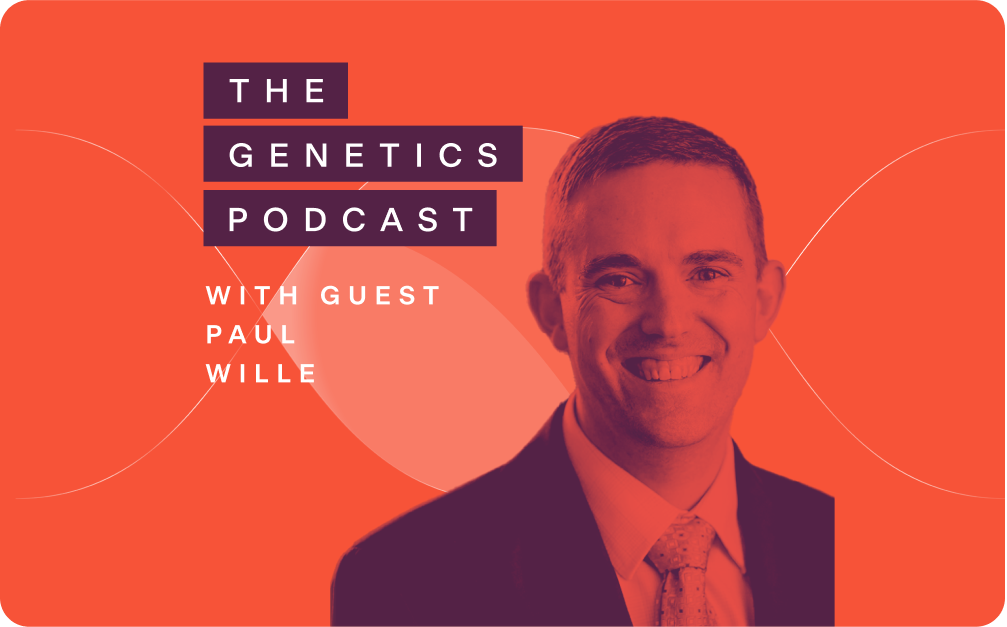Podcast recap: Exploring the future of AAV gene therapy with Paul Wille

In the latest episode of the Genetics Podcast, host Patrick Short spoke with Paul Wille, Director of Product Development at Abeona Therapeutics, about adeno-associated virus (AAV) in gene therapy. The conversation covered the advantages of AAV as a gene delivery vehicle, the challenges slowing down its uptake, and its potential uses, particularly in eye conditions. Here’s a breakdown of the key points from their discussion:
Why use AAV for gene therapy
AAV is a naturally occurring virus that has been adapted for use in gene therapy. Paul explains that one of the biggest advantages of AAV is that the virus itself doesn’t cause disease, making it relatively safe to use. It also has a broad range of applications since it can target different cell types by altering the virus's outer shell, or capsid. Once inside the target cell, AAV’s genetic material exists outside the host’s chromosomes in the nucleus, forming what is called an "episome". This feature is particularly beneficial because it allows for gene expression without altering the host’s DNA.
AAV has already been used successfully in treatments like Zolgensma for spinal muscular atrophy (SMA) and Luxturna for inherited retinal diseases. According to Paul, these examples illustrate the durability and effectiveness of AAV-based therapies, especially in non-dividing cells like those found in the eye.
Overcoming the limitations of AAV
While AAV has success stories like these, it isn’t without challenges. One major limitation of the therapy is the size of the genetic material it can carry, restricting its use for diseases involving larger genes. Paul points out that while this challenge can be addressed by using multiple AAV vectors, it does add more complexity to the treatment. Another challenge is the fact that in rapidly dividing cells, AAV’s genetic material may dilute over time, reducing the effectiveness of the therapy.
Manufacturing also presents challenges. Producing large quantities of AAV for systemic therapies can be costly and inefficient. However, Paul highlights some key advancements in AAV manufacturing that could help reduce costs and make large-scale therapies more feasible in future. He notes that improvements in cell lines and production techniques are allowing for significantly higher yields of viral vectors, which is crucial for treating larger populations or delivering higher doses.
AAV applications in eye diseases
Since the retina consists of non-dividing cells, AAV’s long-lasting effects make it an ideal candidate for treating inherited retinal diseases. Abeona Therapeutics is working on therapies for conditions like X-linked retinoschisis and autosomal dominant optic atrophy, using a proprietary capsid, called AAV204, which has demonstrated excellent results in preclinical studies.
The future of AAV in gene therapy
Despite the challenges, Paul remains optimistic about the future of AAV gene therapy. He believes that with ongoing improvements in delivery methods, manufacturing, and regulatory support, AAV will continue to play a key role in treating both rare and more common diseases. In particular, it has major potential for delivering gene editing tools like CRISPR, opening up even more exciting possibilities for the future.
Listen now:
